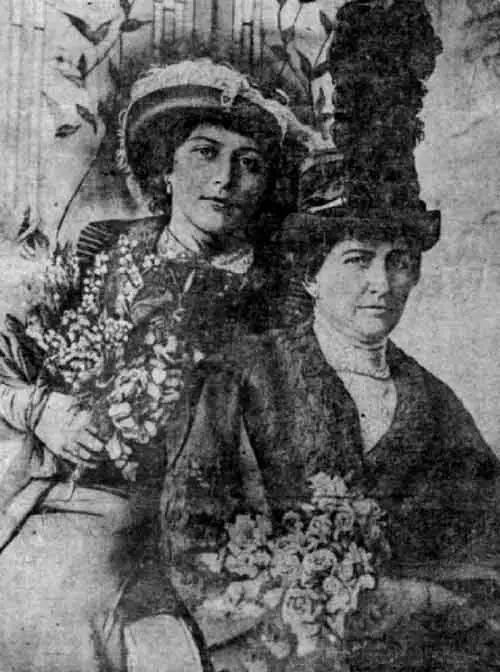On April 15, 1912, the Titanic gained international infamy as it sank into the icy waters of the North Atlantic Ocean. In just under three hours after hitting an iceberg, the “unsinkable” ship was below the waves. Without enough lifeboats or modern day procedures for rescue, the sinking resulted in the deaths of more than 1,500 people.
Among the survivors of the sinking were children – some very young, such as two-month-old Millvina Dean – as well as teenagers who would later recall the events of that night. Today, we highlight one of the little-told stories: Gertrude “Jean” Hippach, a 16-year-old second class passenger who was traveling with her mother.

Born in Chicago, Jean’s father was co-owner of a plate glass company and her mother was a fashionable and attractive socialite. The family frequently traveled, and in 1912, Jean and her mother went to Europe. They boarded the Titanic for their trip home as first-class passengers.
Jean and her mother were asleep when the ship struck the iceberg. They slept through the initial disturbance, until the roar of steam escaping through the funnels woke Jean. They put on wraps and went into the corridor, realizing the commotion of other passengers wanting to know what was happening. This is when they heard about the iceberg, but Jean recalls that no one was alarmed or thought there was any danger. Many wanted to go up on deck to see the iceberg, but officers warned the to go back to their rooms so they wouldn’t catch cold.
Jean and her mother returned to their stateroom, but decided to get fully dressed. Returning to the corridor, they were instructed to grab their lifebelts. They did so and went up on deck, where they first saw lifeboats being lowered. Thinking it was safer to stay on the Titanic, Jean and her mother initially refused to get in the lifeboats. They watched the officers try to get people into Boats 2 and 6, but many passengers refused, thinking there was no danger and that Titanic would remain afloat until daytime or the nearby Olympic would rescue them.
Jean and her mother began walking the deck. They ran into Colonel Astor at Lifeboat 4. Astor told the women to get into the lifeboat, and Jean credits him with saving their lives. In an article printed in the Chicago Record Herald on April 22, 1912, Jean stated:
Mrs. Hippach and her daughter said Colonel Astor placed his wife in the last lifeboat on the Titanic. Then he told them to get in. The boat ws already being lowered but the colonel ordered it stopped, and rushing Mrs. and Miss Hippach to a lower deck, assisted them to climb in through a porthole.
The Chicagoans said that there was only one man of the Titanic’s crew in the lifeboat and that the women were forced to take turns rowing until their rescue by the Carpathia.
Just 450 feet away from the ship, they heard an explosion and watched Titanic split apart. The women had been minutes from death. When it was safe, their boat was one of the few that went back – and they rescued eight men. Jean would later recall the night sky which was filled with stars and she also commented on the large number of shooting stars she witnessed.
Jean and her mother made it to New York, greeted by Jean’s father and brother. Seemingly undaunted, Jean continued to travel throughout her life. She rarely discussed her experiences on the Titanic, and as such her memories are put together through newspaper quotes and stories retold by family and friends.
-Tiffany Isselhardt
Program Developer
Girl Museum
